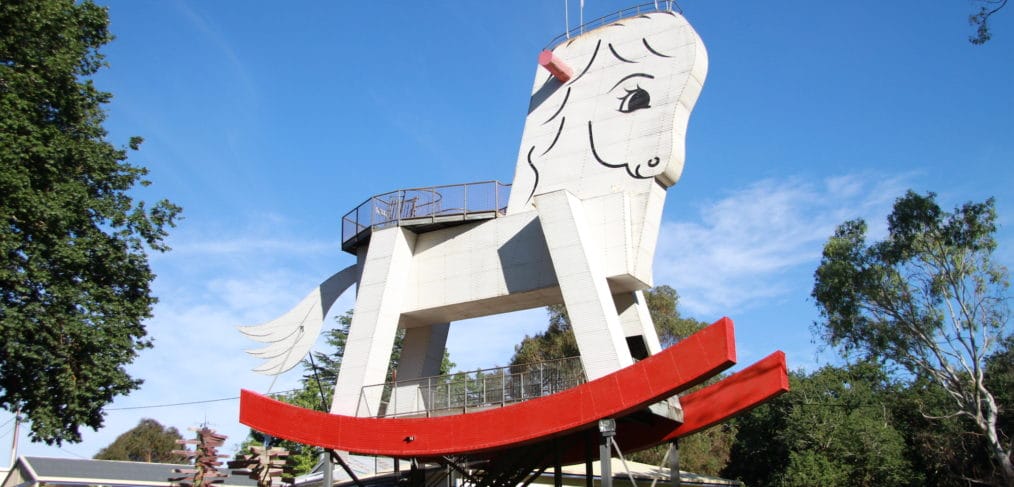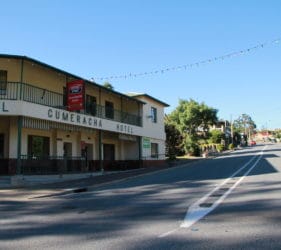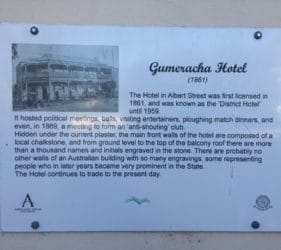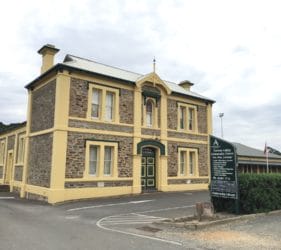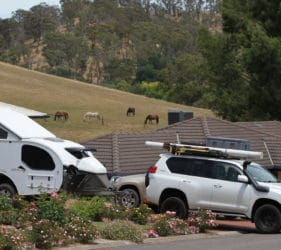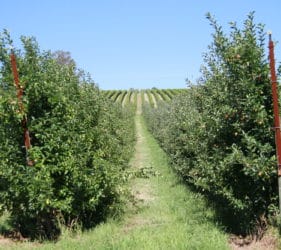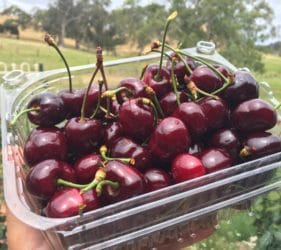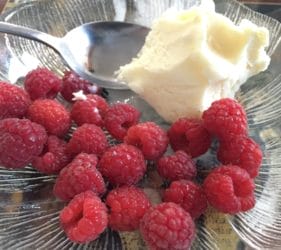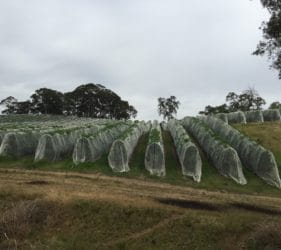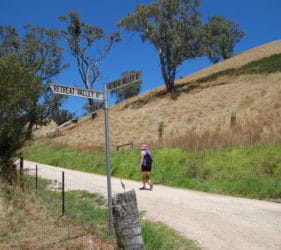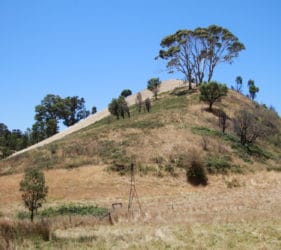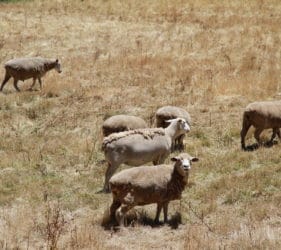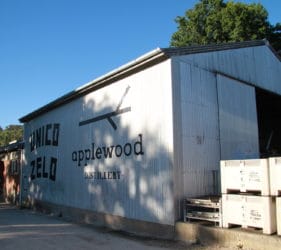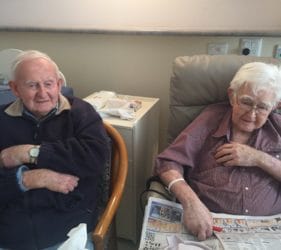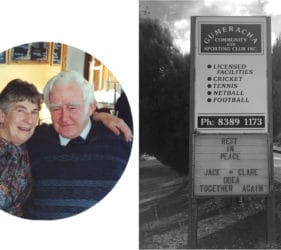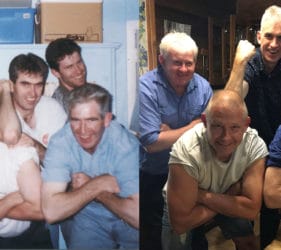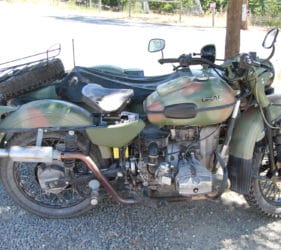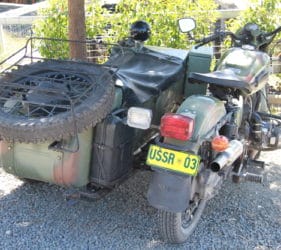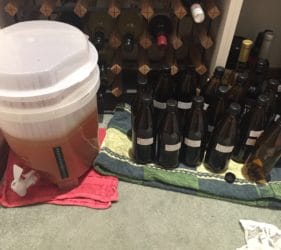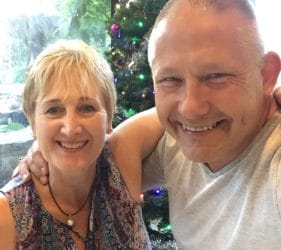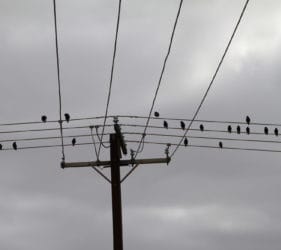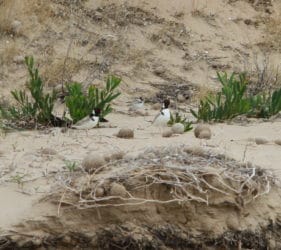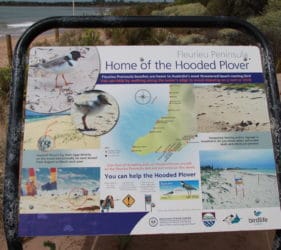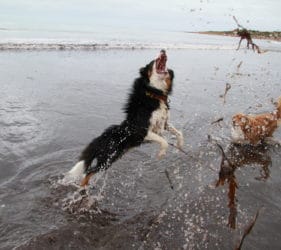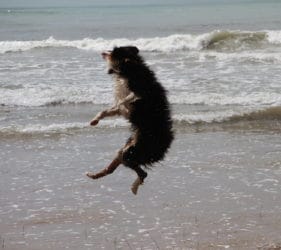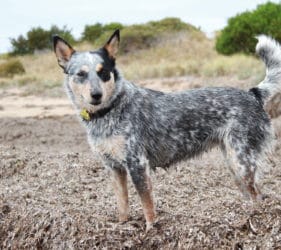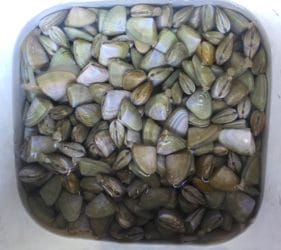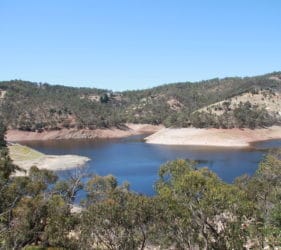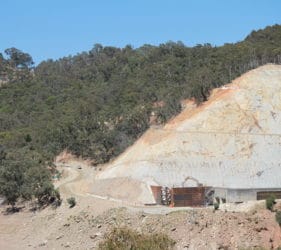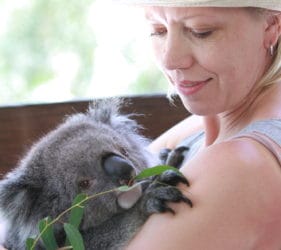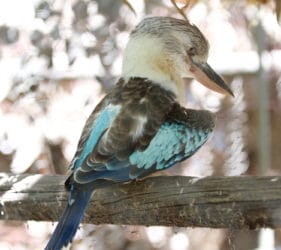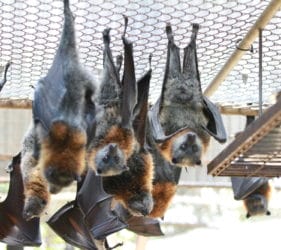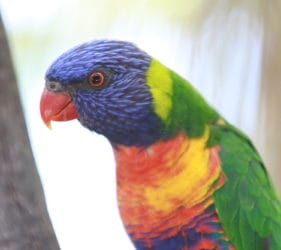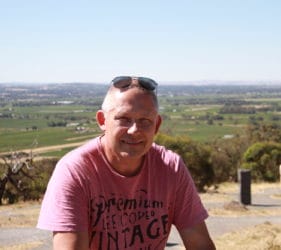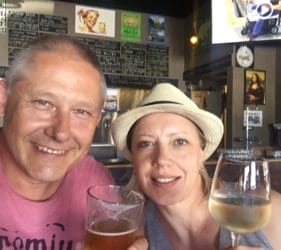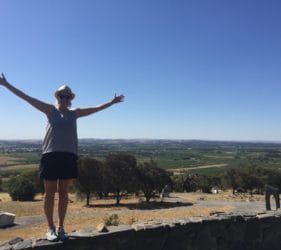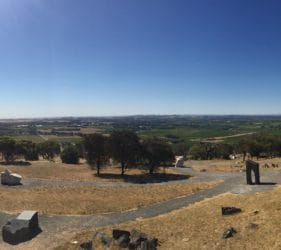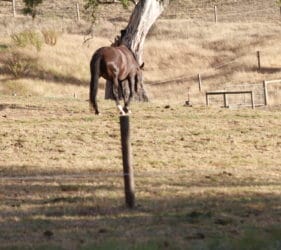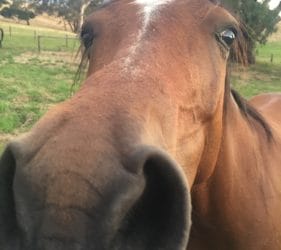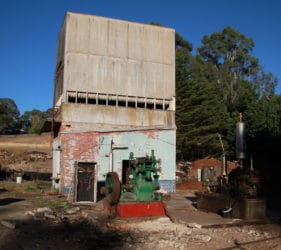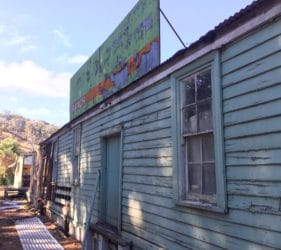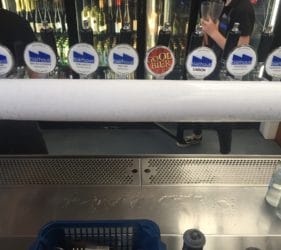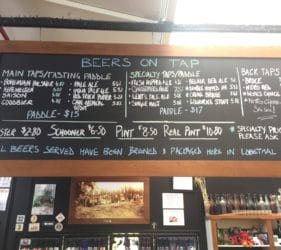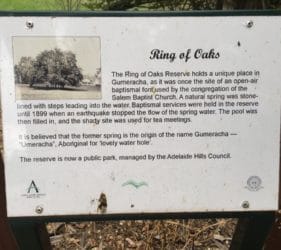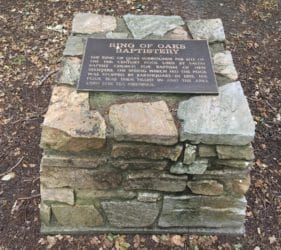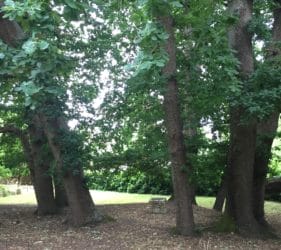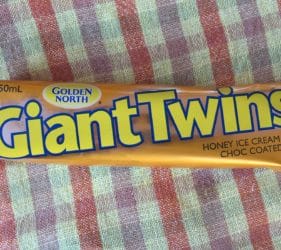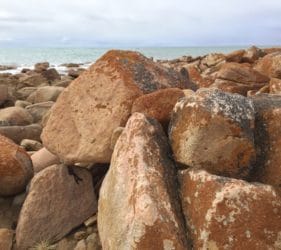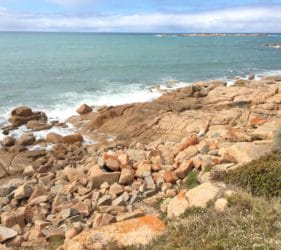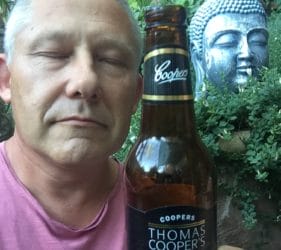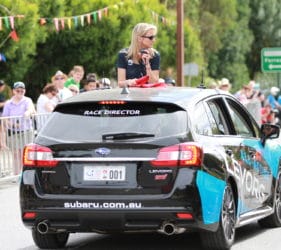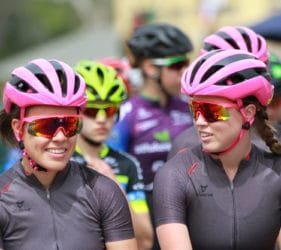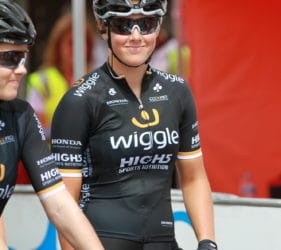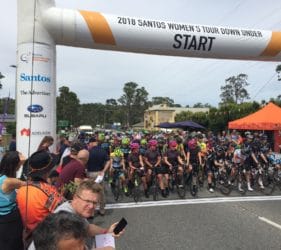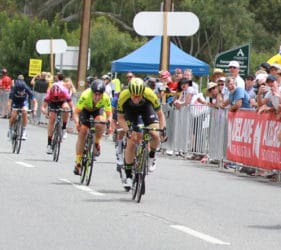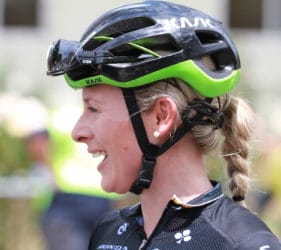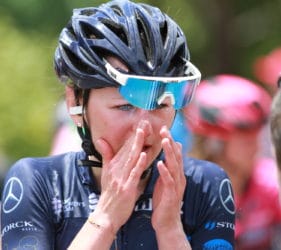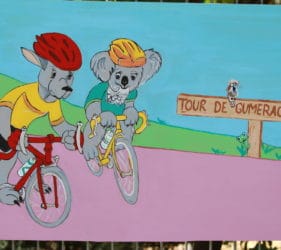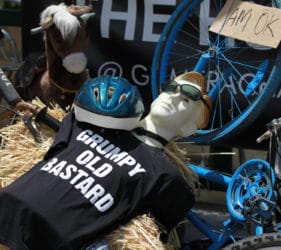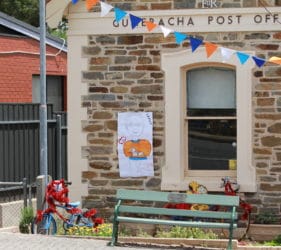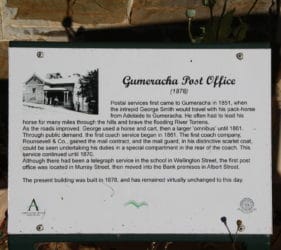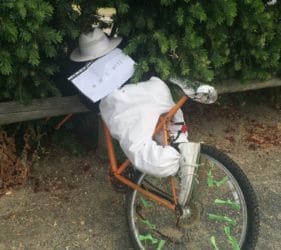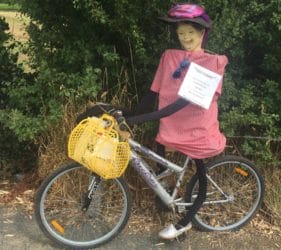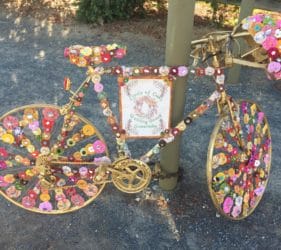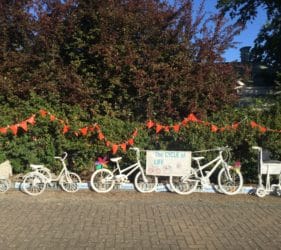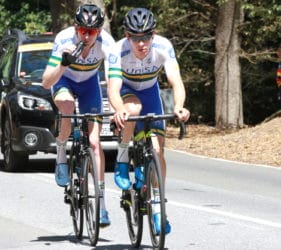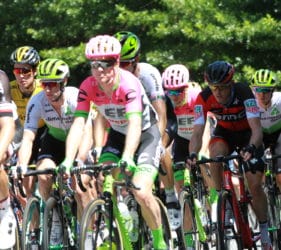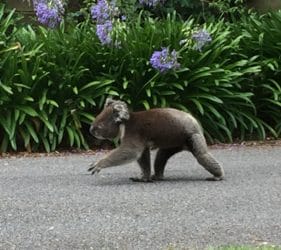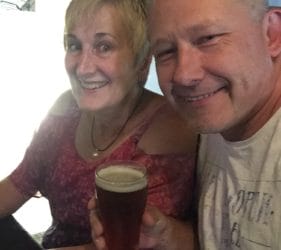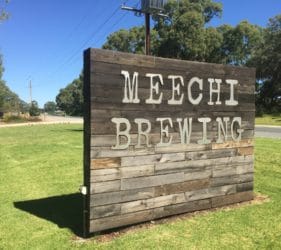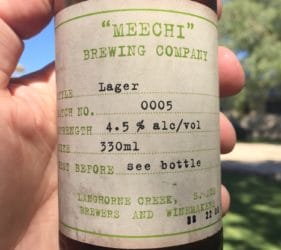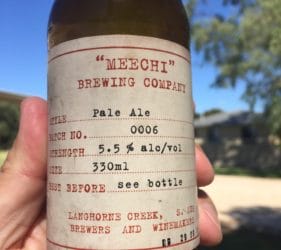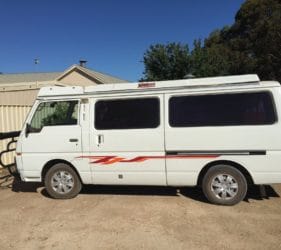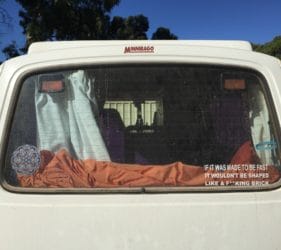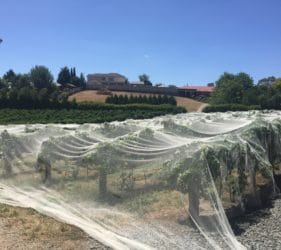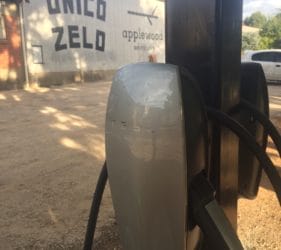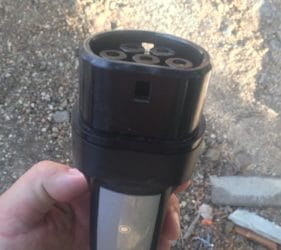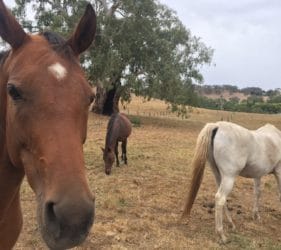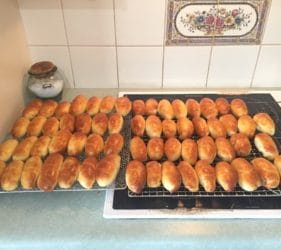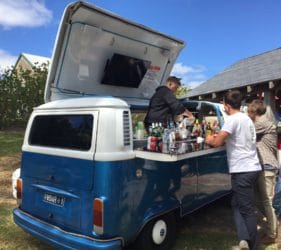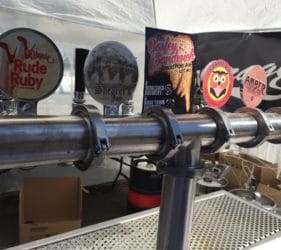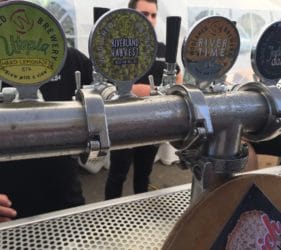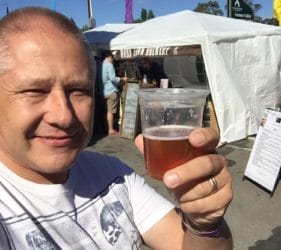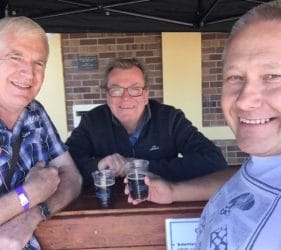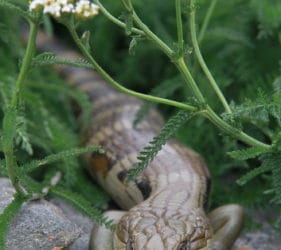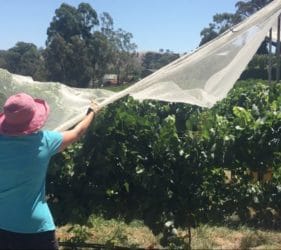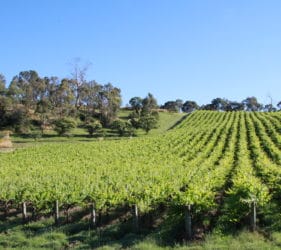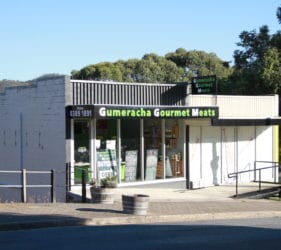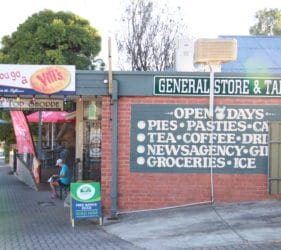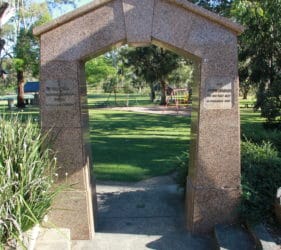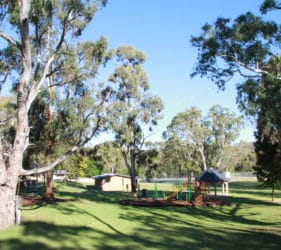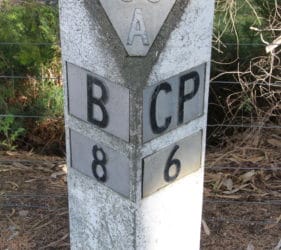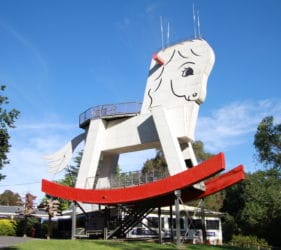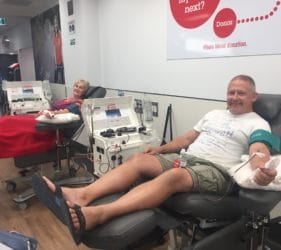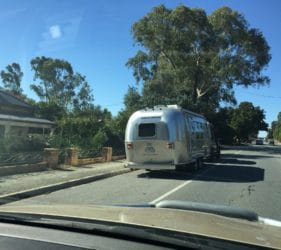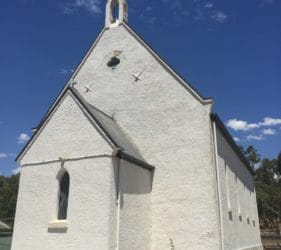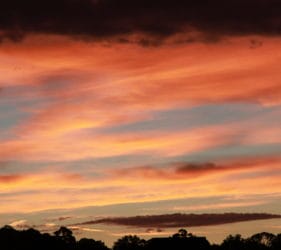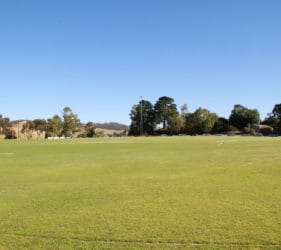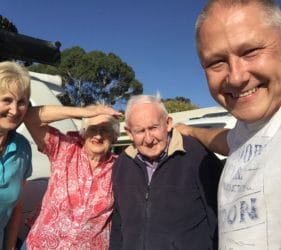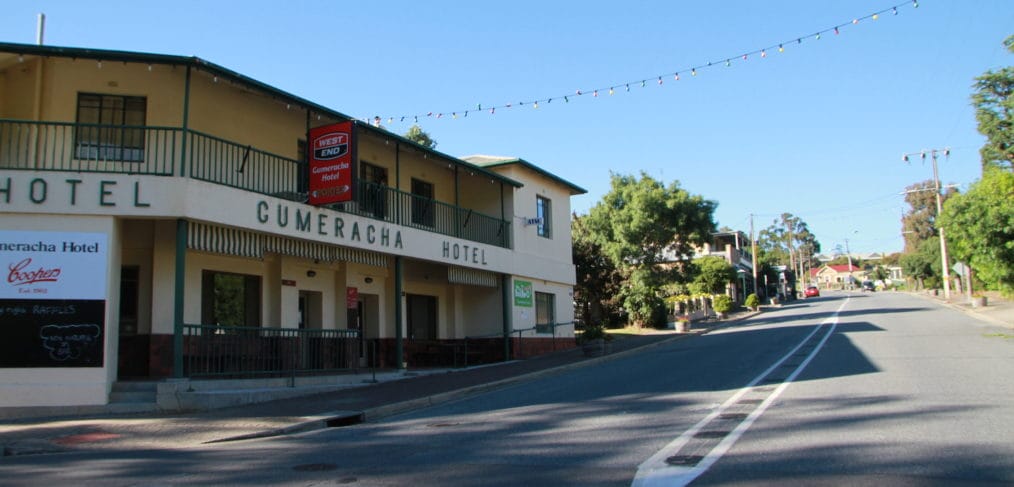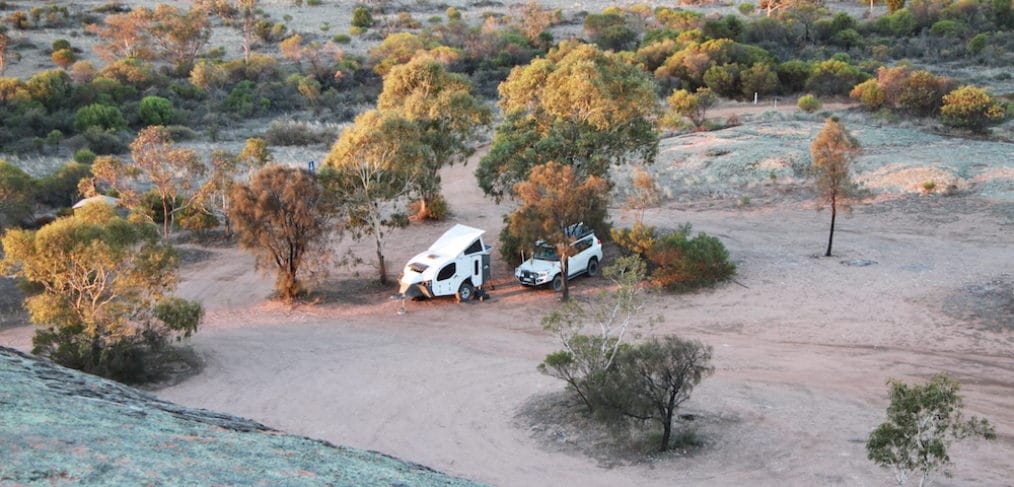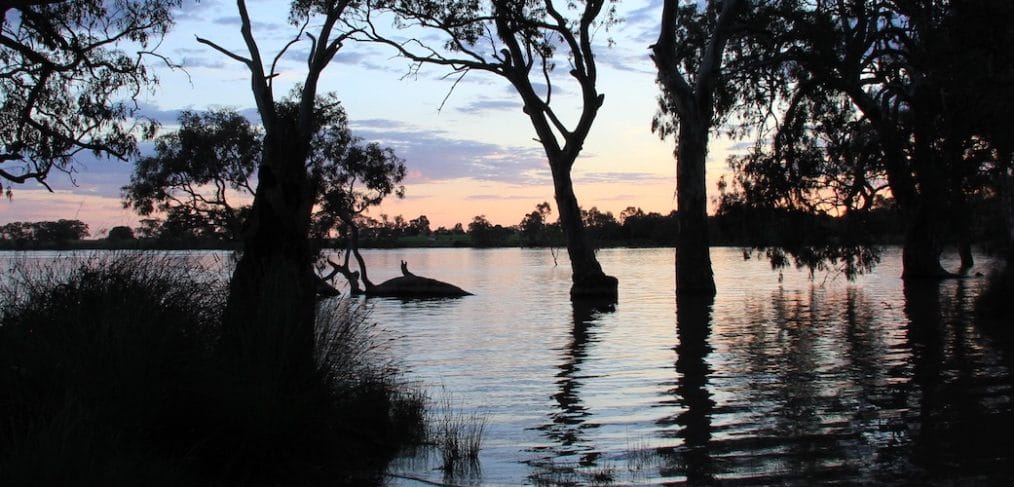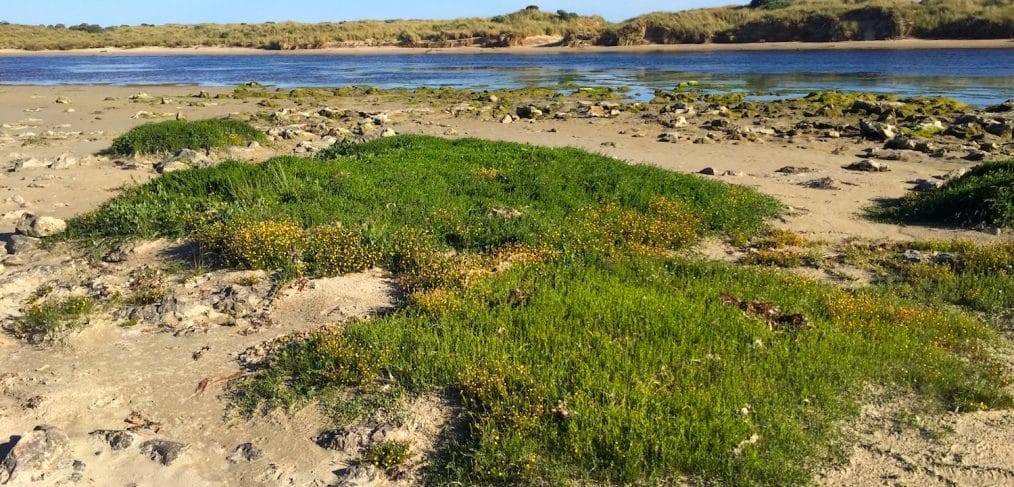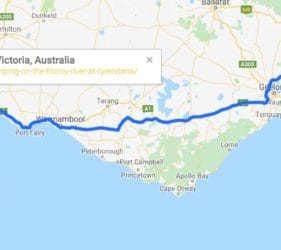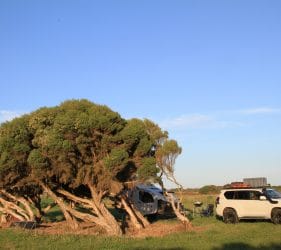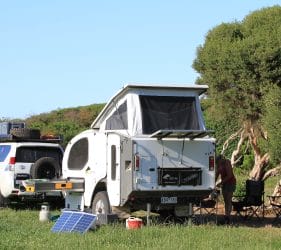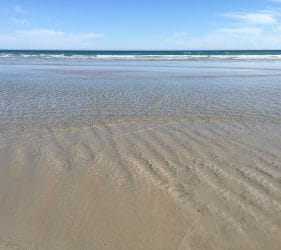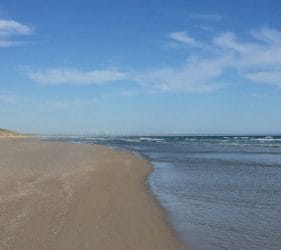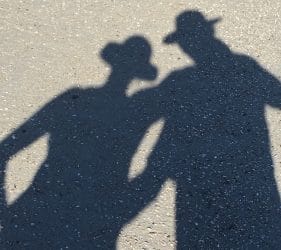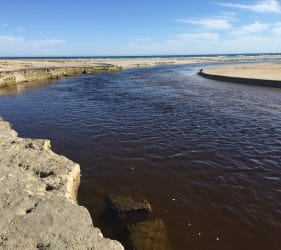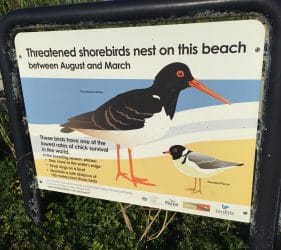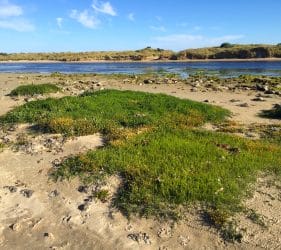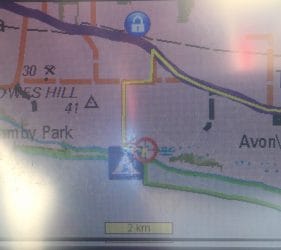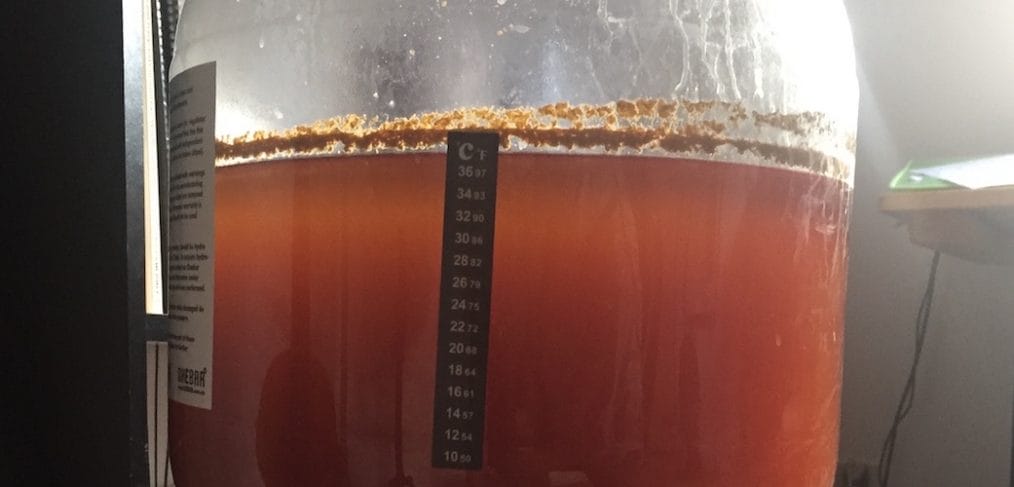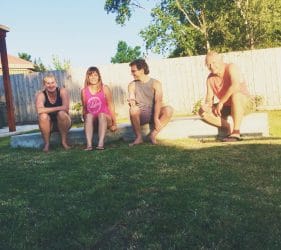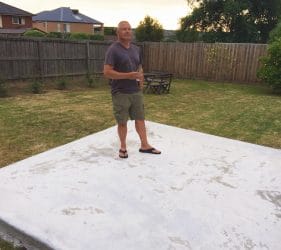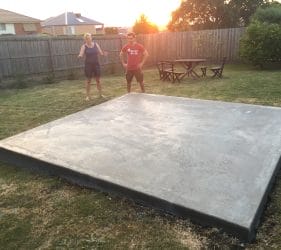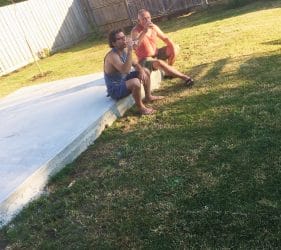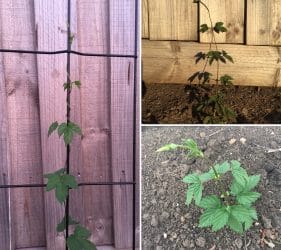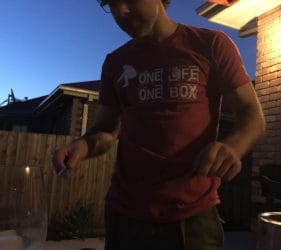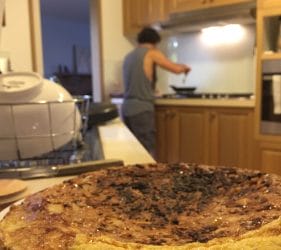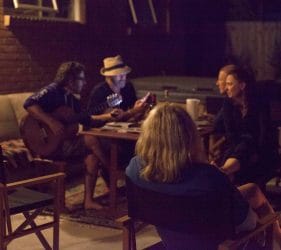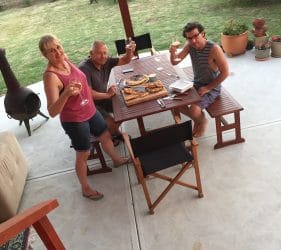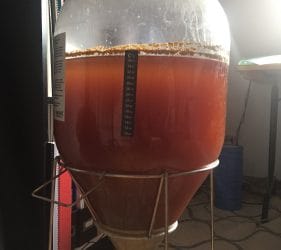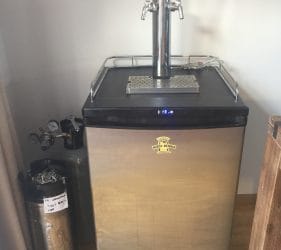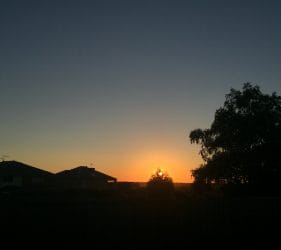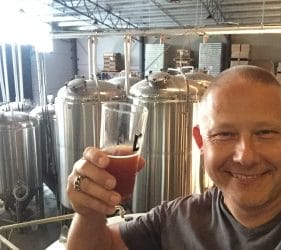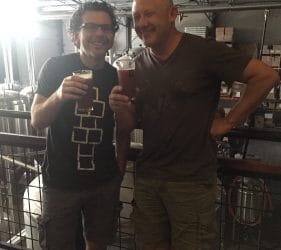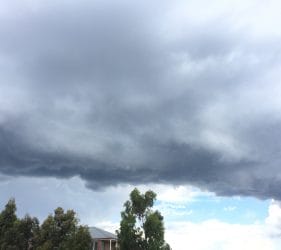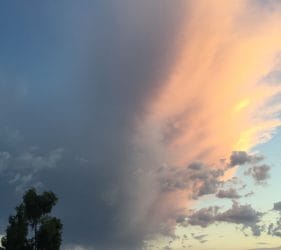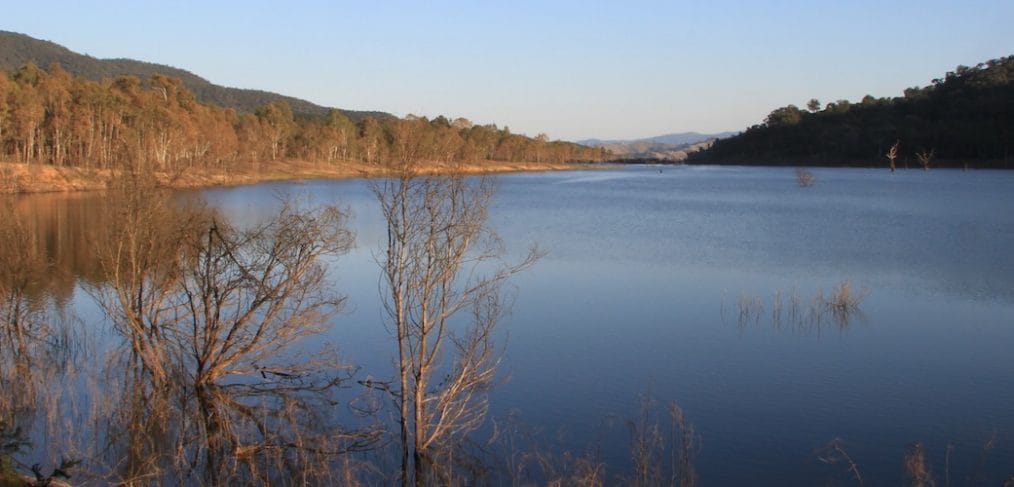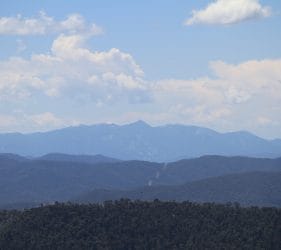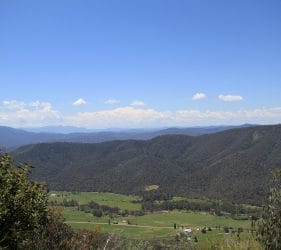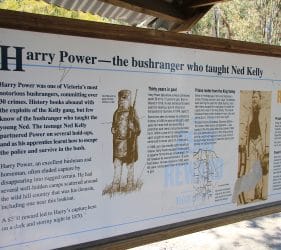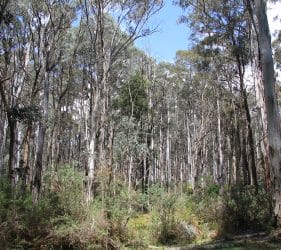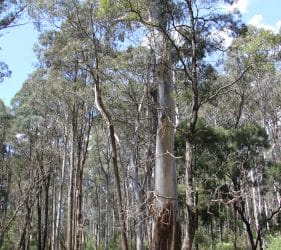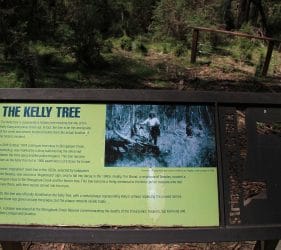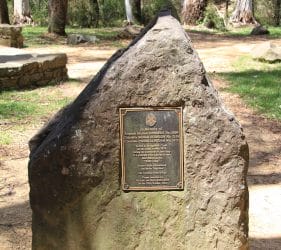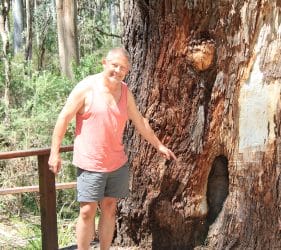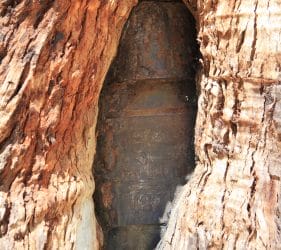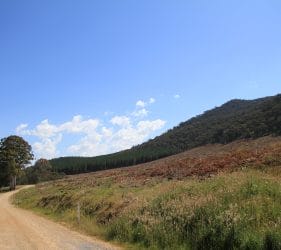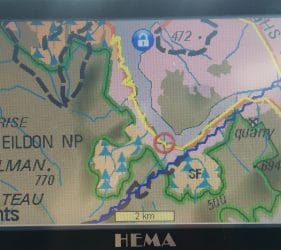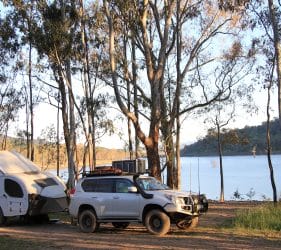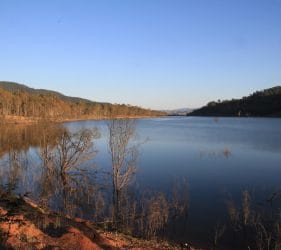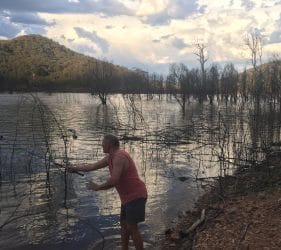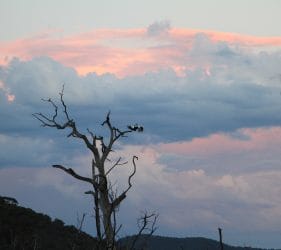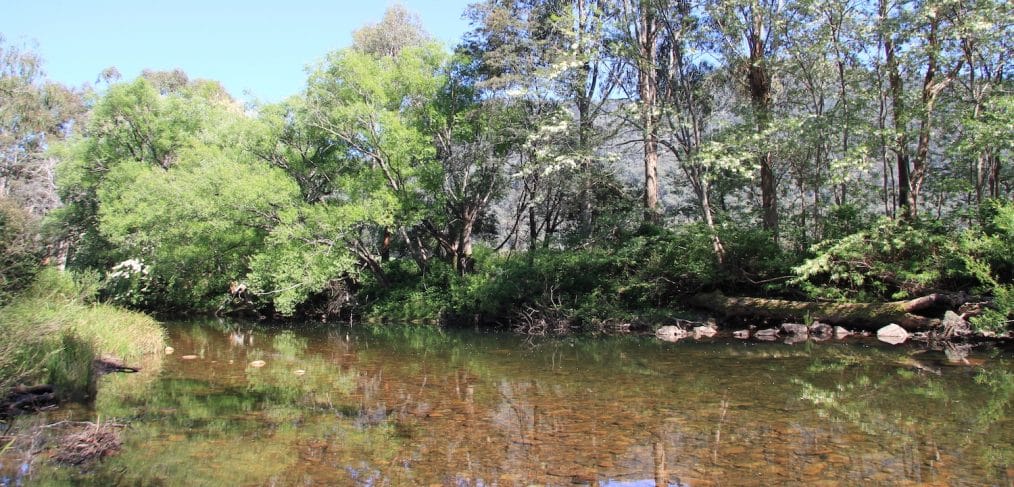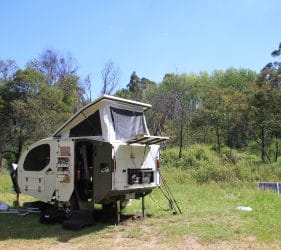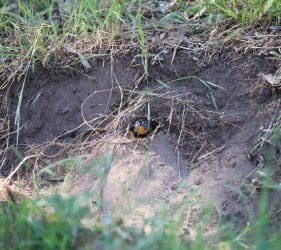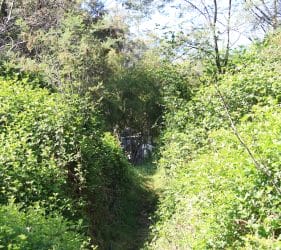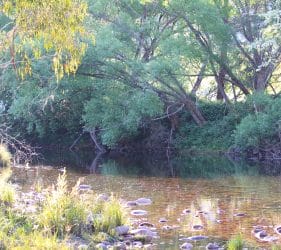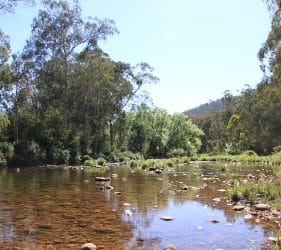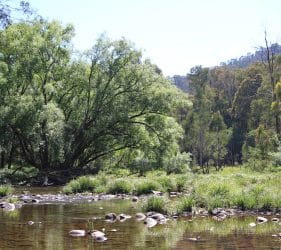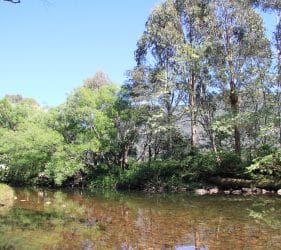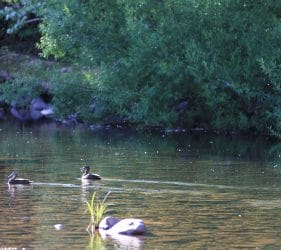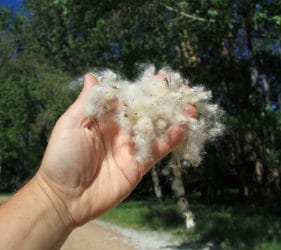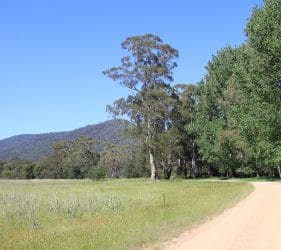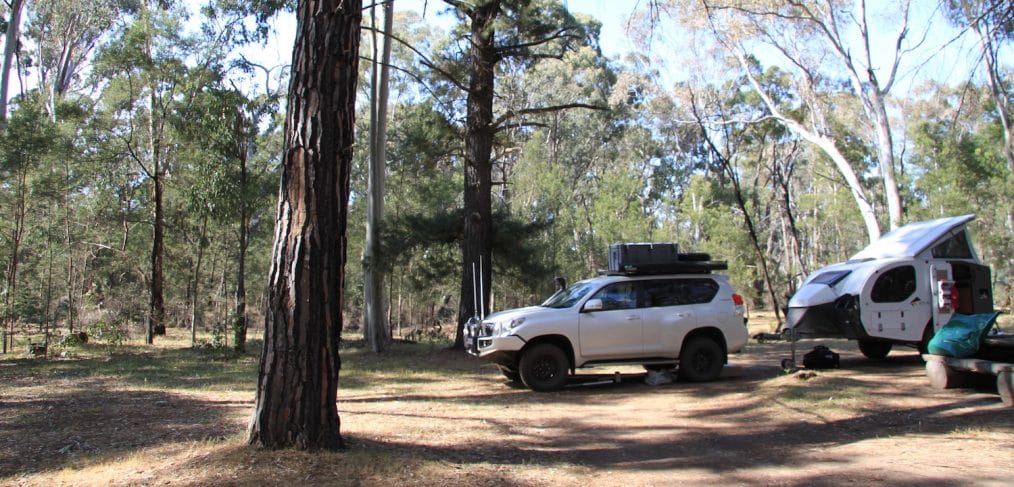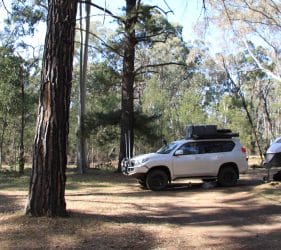After leaving Cockatoo Lake in late November, we were only going to spend a few weeks in Gumeracha in the Adelaide Hills but it turned out to be three months!
Gumeracha is a small township about 40 Kilometres East North East from Adelaide in South Australia with a population of about 700. We know the area well, as Leonie was born there and Vic’s family moved into the Forreston area just 8 Kilometres down the Williamstown Road in 1980. According to the plaque at the Ring of Oaks Reserve near the Salem Baptist Church, the origin of the name Gumeracha is from the Aboriginal word “Umeracha”, meaning “lovely water hole”. In that reserve, there was once a natural spring, until an earthquake stopped the flow of water in 1899.
We arrived at the end of November to celebrate Leonie’s mother’s 80th and the idea was to catch up with relatives and friends and then continue our journey as we planned to head west and perhaps pickup some work during the holiday period.
A sad loss of a special Uncle and Auntie and for the Gumeracha community
However Leonie’s Uncle Jack had been admitted to Gumeracha Hospital a week before we arrived. Christmas was approaching so we decided to stay and spend time with our families. Vic’s cousin Gita from Latvia was also arriving early January for the first time ever in Australia so if we stayed the first week after the New Year we could also spend a few days with her. So we decided to stay until the second week of January, well that was the revised plan.
We visited Jack often in the Gumeracha Hospital, but his health was worsening. We were packed up and ready to head off to Western Australia early January but it was clear Jack was getting worse so we decided to stay. Unfortunately he passed away 10 days later on Saturday 20 January. He was 89 and spent most of his life in the Gumeracha district, farming sheep and growing the best apples in partnership with Leonie’s father Jim. An erudite, kind, caring and witty man who always had time for a chat and left you smiling.
Sadly, Jack’s wife Clare suffered a stroke two days after his passing, and unfortunately passed away on the morning of his funeral. They were married for 57 years and could not be separated. It’s been a tough time for the O’Dea clan. Jack and Clare were stalwarts of the local community and the local Gumeracha Football Club and will be sadly missed.
Jack’s three sons John, Peter and Vincent delivered eulogies at St Matthew’s Catholic Church in Birdwood their parents would have been proud of. Their eulogies to Jack were printed in the Adelaide Hills Catholic Parish Bridge magazine in February and Clare’s was printed in the March edition.
Two O’Dea brothers married two Abbott sisters from Melrose, so the O’Dea’s are a tight family unit. Leonie’s mother Eileen lost her sister Clare and her father Jim lost his brother Jack. After the funerals we decided to stay with them a little longer to make sure they were ok. We did need to continue our journey but having spent this extra time with them and hearing stories they’ve shared with us will be with us forever.
Click here to read the eulogies that Jack and Clare’s sons John, Peter and Vincent delivered plus view photos shown during the church services.
A short home sit and glamping in Gumeracha and Kenton Valley
After Christmas we spent a few days looking after Leonie’s cousins home in Kenton Valley. Mainly to water gardens, make sure fruit trees are watered and look after their chooks and ducks. It was also a good opportunity to use some decent Internet and get backups of data and photos happening, as you never have enough data on the road. Fruit at this time of the year in the Adelaide Hills is amazing, with raspberries, blackberries, nectarines and cherries in abundance from the local regions.
We visited friends and family around Adelaide but generally stayed in Gumeracha and glamped in the comforts of Leonie’s parents home. The house has a lovely view over a paddock with a few horses and is next to a vineyard so it’s scenic glamping at its best. We helped their neighbours Glen and Sarah cover their Chardonnay vines with netting one day as they were ripening to stop getting eaten by birds.
On an early morning’s walk up Jackson’s Hill Road we heard classical music playing. Walking further up the road (it’s a steep road!), we discovered it was coming from a tractor parked in a cauliflower garden. Maybe that’s the secret to growing big and healthy veggies! Click here to play the video.
Hugging Koala’s
We visited the Gorge Road Wildlife Park with Vic’s cousin Gita from Latvia. Naturally she wanted to see Australian animals up close and hug a koala and this is the place to do it. It’s a fantastic park where you can see all your favourite Aussie animals such as Koalas, Kangaroos, Dingos, Tasmanian Devils, Wombats, Echidnas, Snakes, Lizards, Bats, Bilby’s and more.
Having lived just up the road from this park, we must have driven past a thousand times. Leonie says she went there when she was young, but Vic doesn’t ever recall having visited there. What a hidden treasure and fantastic place to see Australian animals up close. We can highly recommend this park if you’re in Adelaide. It’s less than 30 minutes drive up the picturesque Gorge Road which passes scenic views of the Kangaroo Creek Dam, and in a small town called Cudlee Creek.
We have named our camper…
If you’ve been following our journey, you would know that our tow vehicle is called Peggy, short for Pegasus, the flying white horse. She was named after we first bought her by one of our close 4WD’ing friends Mark and has been called that ever since. But we hadn’t settled on a name for our Vista RV camper. After spending all this time with Leonie’s parents, her father reminded us that Leonie used to be called Dusty Dora as she liked to play in the dirt when young. So that settled it, being an off roader the name was perfect, so she has been named Dusty Dora or Dora for short.
What’s at Gumeracha?
Gumeracha is famous for hosting the world’s largest Rocking Horse at the Toy Factory standing 18.3m in height, 17m in length and weighing 25 tonnes. You can also climb it and get great views over the district. There is also another, smaller wildlife park there, and you can see how quality wooden toys are made in the working Toy Factory. If you have children, they’ll love it!
Gumeracha has had a pub since 1861, originally known as the District Hotel until 1959, but the owner passed away unexpectedly early 2017, so it’s been closed for over nine months. There was talk around town about new owners buying it and it re-opening around June 2018. Please let us know when it re-opens in the comments below! There’s also a Police Station, Hospital, Pharmacy, Craft Shop, Op Shop, Medical Practice, Winery called Unico Zelo, a Distillery called Applewood, a Take Away Shop and a general store known as the Top Shoppe at the top of the street funnily enough and a Butcher called Gumeracha Gourmet Meats.
We walked around Gumeracha nearly every morning and back via the Top Shoppe to collect the paper for Leonie’s parents. The proprietors Tony and Marie are very friendly and make the best breakfast and coffee around, as well as making the famous local Gumburger. Even during the popular Men’s and Women’s Tour Down Under bicycle race, and especially the community event, bicycle riders know it’s the place to stop for a great coffee. The community event was actually cancelled this year at last moment as the temperature was going to be in the 40C’s (104F) on the day. An event like this with around 5000 participants would occupy emergency services personnel that needed to be on standby for fires. This didn’t stop keen and fit riders doing the ride anyhow, but at their own risk without any water stops or medical stations.
We were fortunate that the Santos Women’s Tour Down Under Stage 1 started and finished from Gumeracha on Thursday 11th January and it was just a short walk down to the start/finish line. Vic managed to snap a pic of the winner Annette Edmondson before and after the race and got a few good photos of other entrants and local art around the town made for the event. He was even standing next to Annette’s manager when she won the race who not surprisingly was ecstatic. The 4th stage of the Men’s race on Friday 19 January started in Norwood and finished at Uraidla, passing Gumeracha around midday so we had front row seats there as well watching the riders pass the Toy Factory.
We also frequented the local butcher, Gumeracha Gourmet Meats. This is a real butcher shop with quality meat and condiments. By real, they are actual butchers who even smoke and prepare their meat. Locally owned and operated by Doug and Alice who are passionate about their shop and it shows with the great customer service they provide along with friendly staff like Kyle. Vic’s favourites were the double smoked bacon pieces he used to make Latvian Pīrāgi, marinated pork ribs and two South Aussie classics, garlic mettwurst and bung fritz. We can highly recommend a visit to them if you want quality meat and great service.
By the Police Station there is a plaque recognising two men, one a police constable who both died attempting to rescue a man who was trapped in a well. The Memorial Arch at the entrance to the town park commemorates the men who lost their lives after a well explosion in 1928. One man, George Farley was trapped in the well and William Crook was overcome by gas in attempting a rescue. Mounted-Constable Smith died in an attempt to rescue the two men.
Glamping in Middleton on the Fleurieu Peninsula
The day before New Years we drove south to the Fleurieu Peninsula to Middleton to stay for a few days at a relatives beach house and enjoy New Year’s Eve there. Being only a few streets from the beach we went for several walks along it with their (and their daughter’s) dogs, spotting several Hooded Plovers in the dunes along the way.
Not one to miss out on visiting a brewery, Vic along with John went to the Steam Exchange Brewery in Goolwa which he’d visited a few times before and liked their beers. Although it seems like more of a distillery now and with seemingly fewer beer choices than were here a few years ago. This is backed up by this article indicating they are changing focus to whiskeys and have in fact changed name to the Fleurieu Distillery and actually focus 90% on whiskeys, 5% gin and 5% beers. That would explain it. The Steam Ale and Southerly Buster Dark Ale however went down nicely on a very hot day.
More beer, more beer…
While on the subject of beer, another micro brewery (no, even smaller, a nano brewery, no probably a pico brewery) we found down south, in the small town of Langhorne Creek was Meechi Brewing. Meechi is the Aboriginal name for the River Bremer, which flows through Langhorne Creek then eventually into Lake Alexandrina. This brewery is so small, it hasn’t even been reviewed by the Crafty Pint yet, well not that we can find.
A good friend who we grew up with in Gumeracha, who has been living and growing vines in Langhorne Creek for decades now, Andrew Cooper brought us to Meechi as we were down visiting him one weekend in February. They had a Lager and a Pale Ale. Both were very enjoyable. Well done guys, keep brewing, and we look forward to trying newer batches and styles, perhaps an IPA?
Brewing on the road
A friend (thanks Mike!) kindly gave Vic a Coopers Craft Beer Brew Kit so he can brew beer on the road and keep costs down. If you haven’t picked up on the fact, Vic loves beer, especially craft beer.
While in Gumeracha Vic made four brews. We’ll put brewing in this separate blog post because it’s sure to get added to and this one’s getting a bit long!
Gathering cockles for bait
On New Years Eve we drove to Middleton Beach to do some cockling for Goolwa Cockles or Pipi’s as they are also known. The season runs from 1st November to 31st May so we could collect some. The limit is 300 per person per day with a size limit of 3.5 cm across the widest part of the shell. We had achieved our quota in just a few hours of doing hula hoop dances on the beach wiggling our toes into the sand and digging around. This will provide us valuable bait for fishing when camping near the beach. The price of Pipi’s is also horrendous so to collect them this way is not only good exercise and fun but saves money.
Batteries, Solar and Fuses
Back in Cockatoo Lake in November, you may remember reading that our ARB 47L Fridge stopped working with the red error light flashing. This indicates that the battery voltage had dropped below 10.1V. We keep the ARB on the Low setting to get maximum from the battery as it’s connected to a second, deep cycle AGM battery via a Piranha dual battery management unit. It automatically restarts when the battery gets back to 11.V. This error light came on only after about 1.5 days running off the battery. If we are driving, the battery is kept charged. If we plug the solar onto the battery, then it will also stay charged. We realise it can’t run indefinitely without charging but we hope to get at least 2-3 days without plugging in the solar as that’s usually plugged into the camper.
Battery World in Mount Barker kindly load tested the deep cycle AGM battery over a weekend (for free, thanks guys!), but could not fault it. We didn’t even buy the battery from them, having bought it in Broome in September 2014 when we had this exact same red error light coming up, but then the battery wasn’t holding charge so we did need a new one.
Vic had a chat with the Home of 12 Volt shop in Mount Barker and discovered there’s a common problem on Toyota Landcruisers and Prado alternators where the batteries aren’t being delivered enough voltage and so aren’t charging optimally. By just replacing the 7.5A Alternator-S Fuse with another with a diode on top, this delivers 0.6 more Volts to the batteries. In our case, where we had only 12.6V being supplied to them with the car not running, this is now delivering around 13.2V to both batteries. Please comment below if you know more about this problem, it would be good to know if others have encountered it. The cost was $70 for just this 7.A fuse! Let’s hope this charges the batteries better and keeps the fridge running longer!
How to call for help in the middle of nowhere
Now we’re on the road full-time, we thought it wise to invest in a Personal Locator Beacon (PLB) in case of any emergency. BCF were having a sale so we purchased a GME Model MT410G for around $320 and registered it on the AMSA Website. Fortunately, it’s still unused. We’ve set reminders to self test it every three months and do a full GPS Satellite Acquisition test once a year.
From the Instruction manual – WARNING: DO NOT over test – testing consumes some battery power, no more than once per month.
Beer and Bite Festival in Gumeracha
The weekend before we left, Gumeracha was host to the inaugural Beer and Bite Beer Festival and of course, Vic and Leonie’s cousin John had to attend! This was conceived and organised by Henry Carter, a local lad who did a superb job pulling together an amazing event for the small town. Some of the brewers present were the local Lobethal Bierhaus, Woolshed Brewery from Wilkadene Station at Murtho (near Paringa/Renmark) on the River Murray and Robe Town Brewery from Robe in the South East of South Australia.
In addition to hailing from the adjacent township of Lobethal, the Bierhaus is one of Vic’s favorites, and it was good to see the owners Alistair and Rosie present and supporting the local area. We’ve also visited the Woolshed Brewery when we hired a houseboat from Wilkadene Station and can highly recommend them for both boats and beers! They’ll even set your houseboat up with kegs and taps!
Robe Town Brewery is run by husband and wife team, Maris and Kristi Biezaite and we discovered them on one of our camping trips to Southend near Robe. There’s possibly a little bias in Vic’s passion for their brews, given they share a Latvian heritage, but their beer needs to speak for itself and it certainly does in taste and variety. Maris is always brewing something different and his Ambergris Ale certainly delivers on a slight taste of the ocean. Their Moon Hop Pale Ale, Solstice Baltic Porter and Shipwreck Stout are some of Vic’s favourites.
All play and no work…we wish!
During the latter half of December and most of January, Vic developed websites for two Victorian sculptors, Louise Skaćej and Dean Colls.
If you’ve ever driven south down the Peninsula Link Freeway in Melbourne near the Skye Road exit, you might have seen a huge Ram’s skull. It’s called Rex Australis and was commissioned by Dean Colls for the Peninsula Link Freeway in 2011 and completed in December 2012.
The Freeway opened in January 2013 with Rex Australis as the inaugural sculpture for the Skye Rd exit. On completion of its 4 year tenure in 2017, it was moved to the McClelland Sculpture Gallery and Park.
Thanks Louise and Dean for supporting us!
Reach out for work: Vic’s background is in developing computer software and websites. If you have a business, or are in need of a new or upgraded website or IT solution for your business, or know someone that needs help with this, please email or leave a message here.
Leaving Gumeracha and heading West, first via Yorke Peninsula
Finally leaving Gumeracha, we headed West towards Yorke Peninsula. If you’ve made it this far without falling asleep, here’s the next leg of our journey.
Vic had a random thought that he’d like to visit Cook when we cross the Nullarbor and see the Indian Pacific pass on its way from Sydney to Perth or vice-versa. It’s about 110Km north off the Eyre Highway just west of Nullarbor, so that’s where we headed, but first via the Yorke Peninsula because we have to slowly work our way across and arrive in Cook on the right day when the Indian Pacific stops. Read on to see how we went.

